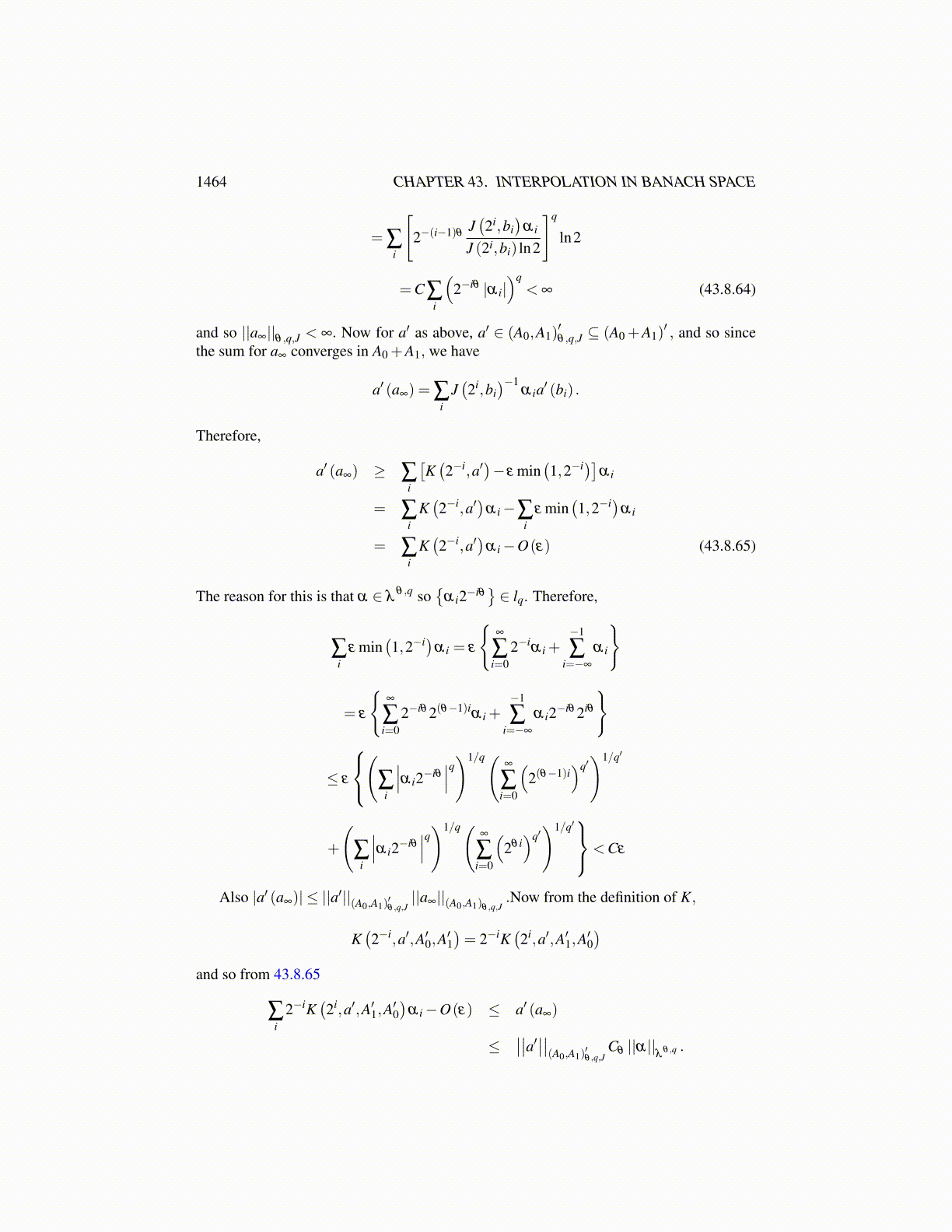
1464 CHAPTER 43. INTERPOLATION IN BANACH SPACE
then a has a representation of the form
a =∫
∞
0u(t)
dtt
where ∫∞
0
(t−θ J (t,u(t))
)q dtt< ∞
whereJ (t,u(t)) = max
(||u(t)||A0
, t ||u(t)||A1
)for u(t) ∈ A0∩A1. Now let
ur (t)≡{
u(t) if t ∈( 1
r ,r)
0 otherwise.
Then∫
∞
0(t−θ J (t,ur (t))
)q dtt < ∞ and
ar ≡∫
∞
0ur (t)
dtt∈ A0∩A1
by Lemma 43.7.2. Also
||a−ar||qθ ,q,J ≤∫ 1
r
0
(t−θ J (t,u(t))
)q dtt+
∫∞
r
(t−θ J (t,u(t))
)q dtt
which is small whenever r is large enough thanks to the dominated convergence theorem.Therefore, A0∩A1 is dense in (A0,A1)θ ,q,J and so
(A0,A1)′θ ,q,J ⊆ (A0∩A1)
′ = A′0 +A′1,
the equality following from Lemma 43.8.1.It follows a′ ∈ A′0 +A′1 and so, by Lemma 43.8.1, there exists bi ∈ A0∩A1 such that
K(2−i,a′,A′0,A
′1)− ε min
(1,2−i)≤ a′ (bi)
J (2i,bi,A0,A1).
Now let α ∈ λθ ,q with α i ≥ 0 for all i and let
a∞ ≡∑i
J(2i,bi,A0,A1
)−1biα i. (43.8.62)
Consider first whether a∞ makes sense before proceeding further.
a∞ ≡∑i
bi2iθ
max(||bi||A0
,2i ||bi||A1
)2−iθα i.